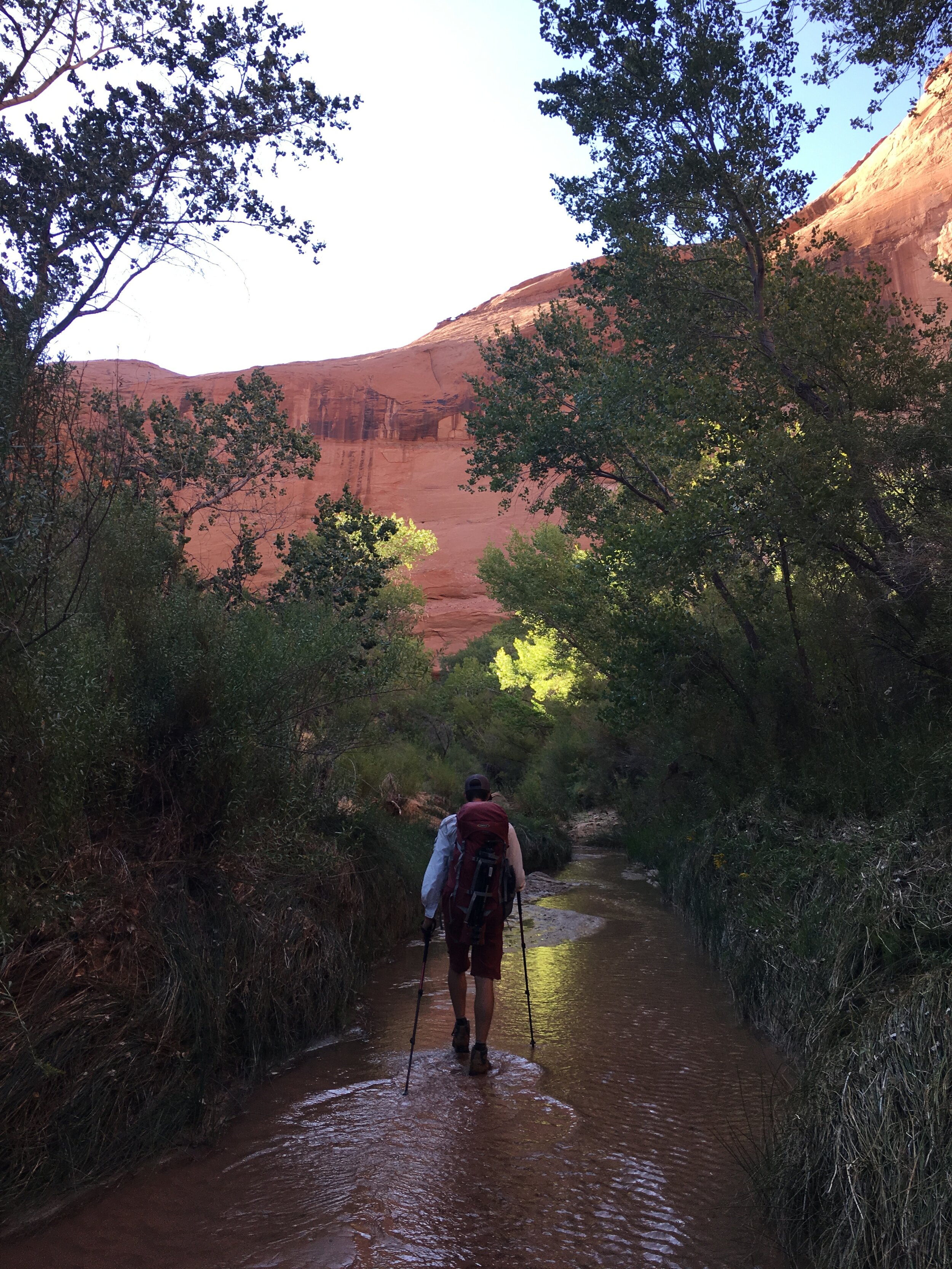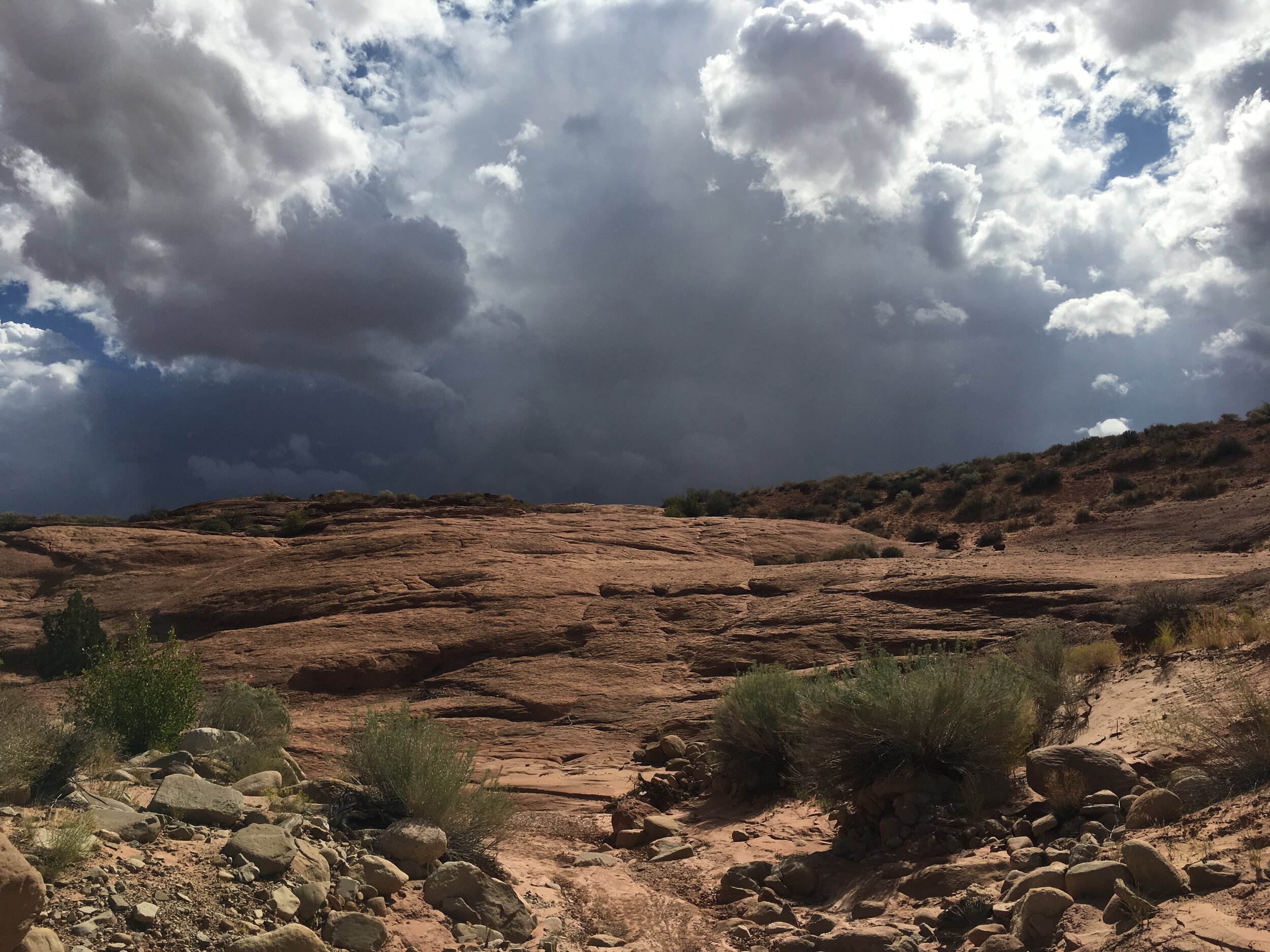After our trip to Glacier, we had another 7 days off, so we decided to check out some areas we hadn’t managed to explore yet. The biggest location on that list was Coyote Gulch in Grand Staircase-Escalante National Monument. We started the trip off in Bryce Canyon National Park so I could capture an image I had planned a few years back but was unable to due to bad weather. It looked like my best chance at getting the image I wanted was on day two, so on our first day, we explored the extremities of the park and found some beautiful locations we had never visited.
© Andrew Lockwood 2019
This waterfall within the park is not within the main entrance and is often overlooked even though the hike is short. I really enjoyed seeing water flowing during this trip even though it was early September. This waterfall used to dry up in the later months, but now flows year-round and delivers water to farms downstream.
After we had hiked around the extremities, we made our way to one of the viewpoints for sunset. The spires don’t catch any light at sunset because the “canyon” is East facing, but a good sunset still renders the area an incredible scene. The first night we were in Bryce Canyon, the atmosphere was hazy. This was most likely due to the strong winds pulling rain into the area. It created a nice layer of diffused light above the spires of the “canyon'“ as the sun set to the West.
© Andrew Lockwood 2019
After the sun had set, I quickly made my way to a viewpoint at the opposite end of the park to capture some afterglow that was happening in the sky. The purple hues were incredible and bats were zooming past my head at an alarmingly close proximity. Thanks to those little guys though, I didn’t get a single bug bite that evening.
© Andrew Lockwood 2019
© Andrew Lockwood 2019
That night it drizzled off and on and I was worried my morning image would once again be ruined. I grumbly arose at 4 am to the sound of rain, and made my way out to the location I had selected the previous day. The sky was covered in cloud, but there was a chance I would get what I sought. A small break in the clouds was letting the light from the rising sun peak through, and it happened to be exactly where it was going to rise.
© Andrew Lockwood 2019
The sun rose and peaked through the smallest of breaks in the clouds, and filled the valley with warm reddish light for a few seconds before it disappeared behind the cloud layer.
© Andrew Lockwood 2019
I noticed another fairly large break in the clouds behind me and waited for another fifteen minutes to see if anything came from that break as I had yet to get the image I came for. I waited, practically dancing as the sun peeked back out of that break and cast the light I was seeking. I couldn’t imagine the intensity with which the sun lit the scene before me. Because of the previous night’s rain and the narrow window of light that streamed through the clouds, the colors of the park sprang to life as if on fire! I remember feeling giddy as I snapped the following image.
© Andrew Lockwood 2019
It was one of the most intense sunrises I’d experienced and I frantically composed a few more images as the sun began to melt off the cloud cover and the light started fading back to normal.
© Andrew Lockwood 2019
© Andrew Lockwood 2019
I stuck around for a while just basking in the moment and chuckled at how small of a chance it actually was that the clouds would have been in the perfect position for the series of events that had unfolded. We left Bryce later that morning and headed out of cell service into one of the neatest and most remote places in the United States; Grand Staircase-Escalante National Monument.
Our first stop was at a slot canyon that despite being only 1/4 mile long really packs the beauty punch. It is difficult to weave through the narrow canyon which can be filled with water as deep as your waist sometimes. The first 100 feet are usually the deepest and you have to grope with trekking poles so you don’t twist an ankle on the submerged stoned. The walls are less than shoulder-width apart in some parts, which forces you to lift your pack above your head and squeeze through sideways.
Composing an image in this environment is difficult. Setting up a tripod is almost impossible, but manageable if you oppose pressure on opposite walls as seen in the image below.
Once you have the shot set up you just have to protect yourself and your camera from sand being blown into the canyon from above, and wait for the light to reach its best. I shot two compositions while in this canyon before the light became too harsh.
© Andrew Lockwood 2019
© Andrew Lockwood 2019
Once we had scraped and clawed our way back out of the canyon and back to our car, we turned our attention to finding a proper campsite to set up shop for the night. We found a wonderfully secluded spot near the following morning’s location and retired early for the night.
We woke early around 4:30 am and headed into Devils Garden, ( an eery place when all you have to light your surroundings is a headlamp) and waited for the sun to rise. The composition I photographed here is by no means new, but I attempted to make it unique. Without a single cloud in the sky, the purple/ pink hues of pre-dawn light illuminated the sky to the south. With nothing to hinder the light as it crested the horizon, there were a few moments when I could capture ambient sidelight on the pillars whilst still getting the nice glow of pre-dawn in the sky behind.
© Andrew Lockwood 2019
Because there were no clouds in the sky, the light quickly became harsh and unmanageable, so we packed up our camping gear and headed for Coyote Gulch.
Our entry point to Coyote Gulch was Hurricane Wash, and our goal was Jacob Hamblin Arch which was 7.1 miles down the gulch. The trail started out nicely as we wound our way down the dry wash and into the deeper sections of Hurricane Wash. As we descended, the walls rose up around us and began to narrow. What was dry desert and scrub became seeping water and dense reeds. At times the trail became indecipherable, and I am 100% positive my wife and I crossed paths with a mountain lion on opposite sides of the wash 20 ft apart. We never saw it, but we heard it, and moments later we saw its prints in the wet sand leading to where we heard the rustling. It was an eery, but exhilarating feeling.
We made our way deeper into the wash until it opened up into Coyote Gulch. When we stepped out of the wash and looked around we were amazed at the towering walls above us and the river flowing at our feet.
© Andrew Lockwood 2019
We ended up hiking past Jacob Hamblin Arch to Coyote Natural Bridge before we returned to the arch and set up camp. Our total mileage for the day was 14.6, which was a pretty solid feat in this terrain while carrying camera gear and enough for 3 days in the wilderness. Our campsite was quite possibly one of the neatest places we’ve ever camped. Underneath the towering walls and massive arch, the sense of calm was almost overwhelming.
Anna arose before dawn to the sound of thunder and flashes of lightning. This was a very bad sign as Coyote Gulch is prone to flash floods and fast-moving water when storms are around. The weather forecast had said clear up until the moment we left the vehicle behind, so it was a bit of a shock to hear thunder. We were relatively safe in the location we were so we waited until sunrise knowing we could scramble to high ground if the need arose. It never did, but with storms lingering around the area, we decided it was best to hike on out so we didn’t get stuck for a few days. I managed to capture two hurried shots before we practically jogged the 7.1 miles back to the car.
© Andrew Lockwood 2019
© Andrew Lockwood 2019
It was weird seeing the sun as it rose and while simultaneously hearing thunder. As we made our way back out of Coyote Gulch and through Hurricane Wash, we turned around to allow ourselves a glimpse of the gnar that was behind us…
The storm was building fast and stayed on our tail the whole way out. We had blue skies in front of us and doom and destruction behind us. Somehow we made it to the car in 2 hours and 15 minutes. I managed to get a quick shot of Anna as we made our way up the final 3 miles of Hurricane Wash.
Next Friday I’ll take you up into the Wasatch Mountains near Salt Lake City where I and a few fellow photographers spent the evening photographing one epic sunset.
























